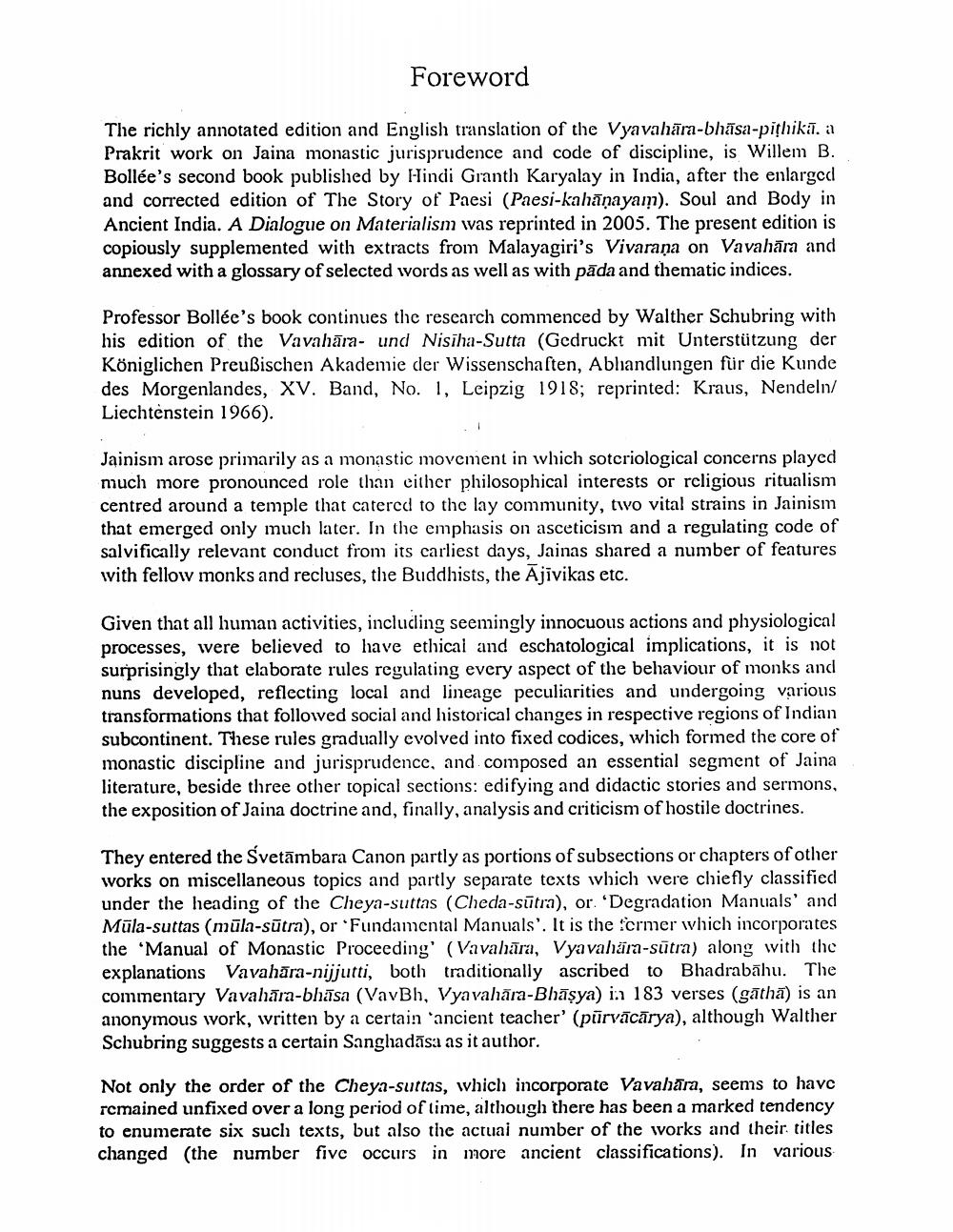________________
Foreword
The richly annotated edition and English translation of the Vyavahāra-bhāsa-pithikā, a Prakrit work on Jaina monastic jurisprudence and code of discipline, is Willem B. Bollée's second book published by Hindi Granth Karyalay in India, after the enlarged and corrected edition of The Story of Paesi (Paesi-kahāņayam). Soul and Body in Ancient India. A Dialogue on Materialism was reprinted in 2005. The present edition is copiously supplemented with extracts from Malayagiri's Vivarana on Vavahāra and annexed with a glossary of selected words as well as with pada and thematic indices.
Professor Bollée's book continues the research commenced by Walther Schubring with his edition of the Vavahāra- und Nisiha-Sutta (Gedruckt mit Unterstützung der Königlichen Preußischen Akademie der Wissenschaften, Abhandlungen für die Kunde des Morgenlandes, XV. Band, No. 1, Leipzig 1918; reprinted: Kraus, Nendeln/ Liechtenstein 1966).
Jainism arose primarily as a monastic movement in which soteriological concerns played much more pronounced role than either philosophical interests or religious ritualism centred around a temple that catered to the lay community, two vital strains in Jainism that emerged only much later. In the emphasis on asceticism and a regulating code of salvifically relevant conduct from its carliest days, Jainas shared a number of features with fellow monks and recluses, the Buddhists, the Ājivikas etc.
Given that all human activities, including seemingly innocuous actions and physiological processes, were believed to have ethical and eschatological implications, it is not surprisingly that elaborate rules regulating every aspect of the behaviour of monks and nuns developed, reflecting local and lineage peculiarities and undergoing various transformations that followed social and historical changes in respective regions of Indian subcontinent. These rules gradually evolved into fixed codices, which formed the core of monastic discipline and jurisprudence, and composed an essential segment of Jaina literature, beside three other topical sections: edifying and didactic stories and sermons, the exposition of Jaina doctrine and, finally, analysis and criticism of hostile doctrines.
They entered the Svetāmbara Canon partly as portions of subsections or chapters of other works on miscellaneous topics and partly separate texts which were chiefly classified under the heading of the Cheya-suttas (Cheda-sūtra), or. 'Degradation Manuals' and Müla-suttas (mūla-sūtra), or "Fundamental Manuals'. It is the scrmer which incorporates the 'Manual of Monastic Proceeding' (Vavahāra, Vyavahära-sūtra) along with the explanations Vavahāra-nijjutti, both traditionally ascribed to Bhadrabāhu. The commentary Vavahāra-bhāsa (VavBh, Vyavahāra-Bhāşya) ia 183 verses (gāthā) is an anonymous work, written by a certain 'ancient teacher' (pūrvācārya), although Walther Schubring suggests a certain Sanghadāsa as it author.
Not only the order of the Cheya-suttas, which incorporate Vavahāra, seems to have remained unfixed over a long period of time, although there has been a marked tendency to enumerate six such texts, but also the actual number of the works and their titles changed (the number five occurs in more ancient classifications). In various




